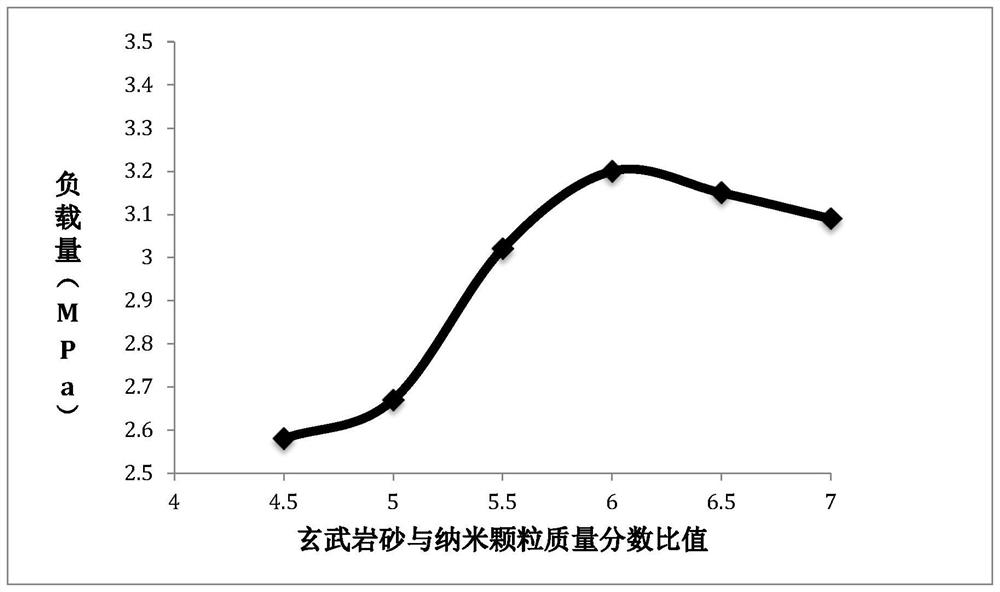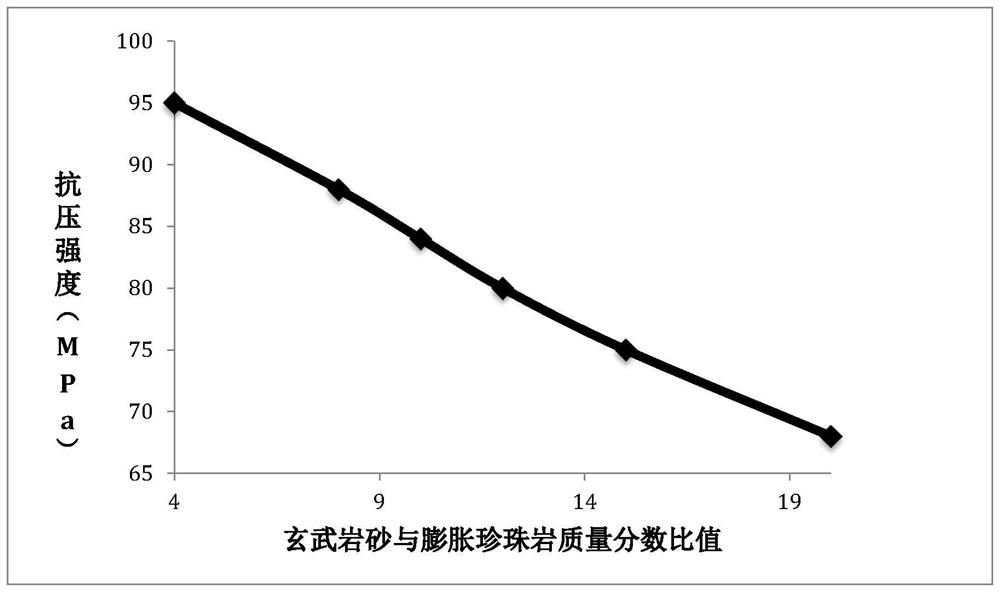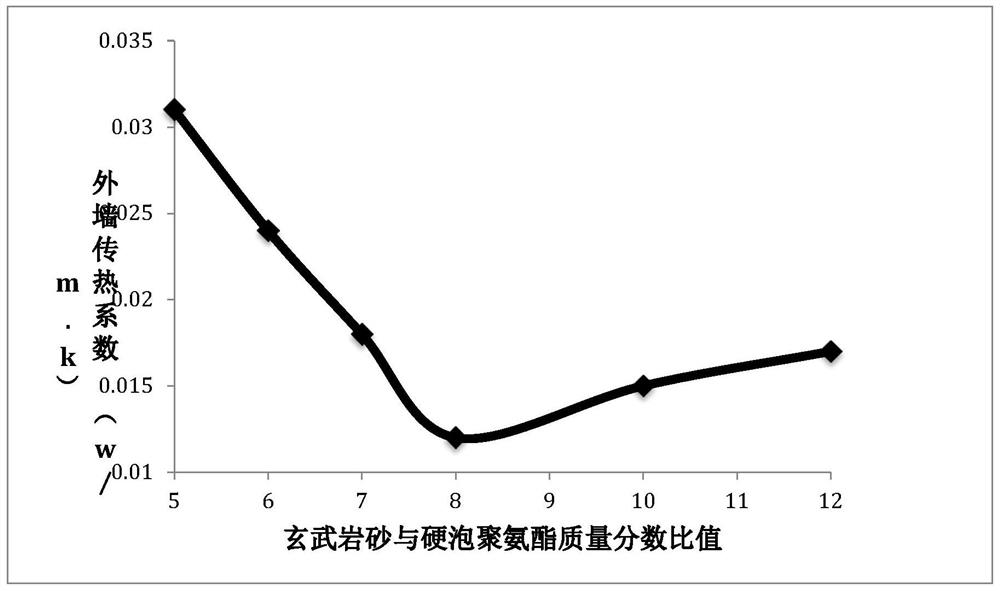An inorganic wall thermal insulation material
A thermal insulation and wall technology, which is used in the application of thermal insulation materials and inorganic wall thermal insulation materials, can solve the problem that the K value of the heat transfer coefficient cannot meet the requirements of ultra-low energy consumption buildings, and achieves the elimination of harmful chemical substances, The effect of lowering the K value, increasing the load and surface area
- Summary
- Abstract
- Description
- Claims
- Application Information
AI Technical Summary
Problems solved by technology
Method used
Image
Examples
Embodiment 1
[0047] Example 1 Preparation steps of rock wool material
[0048] (1) Take 60 parts of basalt sand, melt it at a high temperature above 1450 °C, and then use a four-axis centrifuge to centrifuge it into fibers at a high speed, and cool it to below 200 °C for use;
[0049] (2) Take 8 parts of binder, 5 parts of dust-proof oil, and 10 parts of water repellent, spray into the fiber after centrifugal cooling and stir evenly;
[0050] (3) Take 8 parts of aluminum hydroxide, 10 parts of nanoparticles, 15 parts of expanded perlite, 7.5 parts of rigid foam polyurethane, 4 parts of polymer bonding mortar, 5 parts of thermal insulation mortar, 7 parts of polymer plastering and anti-cracking mortar, water 10 servings, put in a blender and mix well for later use;
[0051] (4) adding the mortar mixture in the step (3) into the fiber mixture in the step (2) in batches and stirring it evenly, and putting it into the mold after the mixing is completed;
[0052] (5) The formed blank board is...
Embodiment 2
[0054] Example 2 The preparation steps of the binder
[0055] (1) Take 20 parts of red algae, add double 4% sodium hydroxide solution to it and soak for 2.5 hours, and heat to 100 ° C, stir while heating, and adjust pH with water to be neutral after 2.5 hours;
[0056] (2) get 60 parts of cornstarch, add 35% sodium hydroxide solution and 30% hydrogen peroxide solution of equal amount therein, be heated to 65 ℃, react 1.5 hours, the tapioca flour after the reaction modulates ph with water to be neutral;
[0057] (3) Put the treated red algae slurry and corn starch into a mixer, add 30-35 parts of water, heat while stirring, heat to 65°C and keep for 3 hours, adjust the pH to 6.8±0.1 with acetic acid , filtered to obtain a clear glue.
[0058] The experimental results show that when the mass ratio of red algae and corn starch is 1:3, the viscosity is the largest.
Embodiment 3
[0059] Example 3 Preparation steps of polymer bonded mortar
[0060] (1) Take 0.028 part of disperse latex powder and 0.005 part of methyl cellulose ether respectively, divide the disperse latex powder into 4 parts evenly, and then mix 0.005 part of methyl cellulose ether and one part of the disperse latex powder evenly, and then in turn Mix it with the other three parts of disperse latex powder evenly for later use;
[0061] (2) Take 1 part of cement and 1.5 parts of medium sand and mix them evenly for later use;
[0062] (3) The mixture of cement and medium sand is evenly divided into 10 parts, and then one part is poured into the mixer for stirring. During the stirring process, the mixture of disperse latex powder and methyl cellulose ether is sprayed into it to make it mix with the mixer. The mixture of cement and medium sand is evenly mixed;
[0063] (4) Add another 9 parts of the mixture of cement and medium sand into the mixer in turn, and the amount added each time s...
PUM
| Property | Measurement | Unit |
|---|---|---|
| diameter | aaaaa | aaaaa |
Abstract
Description
Claims
Application Information
 Login to View More
Login to View More - R&D
- Intellectual Property
- Life Sciences
- Materials
- Tech Scout
- Unparalleled Data Quality
- Higher Quality Content
- 60% Fewer Hallucinations
Browse by: Latest US Patents, China's latest patents, Technical Efficacy Thesaurus, Application Domain, Technology Topic, Popular Technical Reports.
© 2025 PatSnap. All rights reserved.Legal|Privacy policy|Modern Slavery Act Transparency Statement|Sitemap|About US| Contact US: help@patsnap.com



